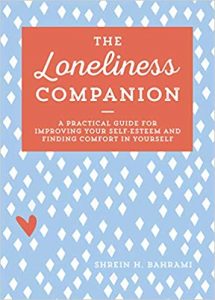There is a myriad of emotions that result from a breakup, creating a cascade of self-questioning thoughts such as:
- What could I have done better/differently?
- Is there something wrong with me?
- If only I had done that one thing, then maybe we would still be together…
Without a solid sense of self, those emotions may plague one’s ability to not transfer them to their next relationship.
Setting the foundation for a healthy relationship begins with owning the fact that we deserve love. And that we have the right to set boundaries. Empowering yourself through self-reflection means asking specific questions including:
- What do I want out of a healthy relationship?
- How can I establish boundaries in all of my relationships moving forward?
Understanding, accepting, and learning how to express one’s needs is a critical piece in fostering a healthy relationship.
Establishing Boundaries
Respecting your boundaries establishes a solid sense of self. When you have a solid foundation, the stronger your connection with another person will be. When we have trouble setting boundaries, it’s often because those boundaries are either too rigid or loose.
Boundaries that are too loose can lead to the exploitation of your emotions. The easy-going nature can be a means for others to latch onto that aspect of you in an unhealthy way. On the other hand, too rigid of boundaries can prevent you from evolving and growing. It will keep you from having new experiences and broadening your perspective.
Childhood influences
Much of our development of boundaries comes from the ones that were modeled to us by our parents. For example, a parent with mental health issues may have been emotionally unavailable for their child, creating an imbalance in the parent/child role.
This may have led the child to cope with their feelings by hiding emotions so as to not upset the parent. This trickles into our adult relationships. We tell ourselves that our feelings or needs do not take precedence over others and that they are a burden.
It is important to recognize that our ability to impact change is something that we can incorporate into our relationships as adults. However, if as children, we did not feel as if we had that power, it can follow us throughout our lifetime.
Tolerance for being mistreated or taken advantage of is common when we do not have high self-esteem. During our teenage years, if we had trouble establishing boundaries, we may have found ourselves in the helper-friend role, focusing on easing other people’s problems while ignoring our own.
Peer influence begins in adolescence, but it can follow us through adulthood as well. Staying true to your own autonomy and intuition can help establish clear boundaries for yourself as you move forward.
Establishing boundaries may lead to feeling:
- More grounded in yourself
- Higher self-esteem and self-worth
- Your words and actions align with your values
- A sense of relief and a weight lifted
- Time for self-care activities and hobbies
- Less chaotic and calmer
The Victim Mentality
The victim mentality is an acquired personality trait where a person views themselves as a victim of the negative actions of others. Recognizing if you have developed this particular trait can help open your perspective. You can work towards letting go of victimhood and develop into a more strong-willed individual.
Are you a self-sacrifice, people pleaser? Do you find yourself saying, “I do everything for others?” or “I have a hard time saying no”?
This is common in those who have difficulty setting boundaries in relationships and are stuck in their own personal narrative. Change can be difficult because there tends to come a point where your needs and the needs of others become enmeshed.
The resistance to expressing our needs often comes from a fear of abandonment, and the first step in releasing that fear is letting go of the belief that your needs don’t matter, or that you can only receive love if you continue to acquiesce to another person.
Activity – Discovering Your Needs in a Relationship
Writing out your needs, particularly in your intimate relationship, will help bring about clarity as well as help you visually distinguish between the traits and values that truly matter to you. Further, it will help you to feel more confident with following through on boundary setting and navigating any potential fear or doubt that might arise.
- Begin by creating a columned list of “wants” and “needs”
- Wants could look like enjoys hiking, has a dog, is a teacher, lives in my neighborhood
- Needs could look like looking for a long-term partner, casual dating, valuing alone time, wanting children
This can help with a perspective shift and make the weight of dating much less intimidating. It also gives you the power to see in concrete terms what it is that you are seeking in a relationship and are deserving of
Once our sense of self and needs are constructed, we can better pull from our past relationships to fine-tune what our needs are. Communicating clearly what your needs are- even if it makes you feel vulnerable, will open your partner up to seeing your authentic self and build a foundation for a healthy relationship.
A relationship that is based on trust enables us to no longer hold in emotions, which can help us communicate in a calm and rational manner.
The 5 Love Languages
The Five Love Languages is a book with concepts developed by counselor Gary Chapman. Chapman found that there is typically one particular love language that matters most to each person in the relationship, which includes:
- Words of Affirmation- Sincere terms of kindness and affirmation, m encouragement and commitment
- Quality Time- Uninterrupted, worthwhile time together to build a strong connection
- Receiving Gifts- Thoughtful, sentimental gifts that are tailored to your partner’s preferences
- Acts of Service- Putting in the effort to make your partner’s life easier, lightening the load of responsibilities
- Physical Touch– Hand holding, hugs, and kisses help ease anxiety and calm down the other person m making them feel safe and reassured
By determining each person’s love language, couples can begin to recognize one another’s needs and the reasoning behind those needs- it is essentially understanding the perspective of the other to better communicate.
Take some time to read through the list and determine your and perhaps your current or past partners’ languages. What worked or got in the way of speaking each other’s languages?
Hopefully, you have found areas in which you can work to improve how you show up in your relationship or in your dating life. Integrating boundary setting, dissolving the victim mentality narrative, drawing out your wants vs. needs, and knowing your love language are all integrative ways to build a healthy foundation in your relationship.
If you’d like support in navigating your relationships, click below to schedule a free intake call.
Written by Emily Bachmeier, MA
Check out Emily’s blog The Nurtured Collective
Excerpts from the book The Loneliness Companion; A Practical Guide for Improving Your Self-Esteem and Finding Comfort in Yourself



